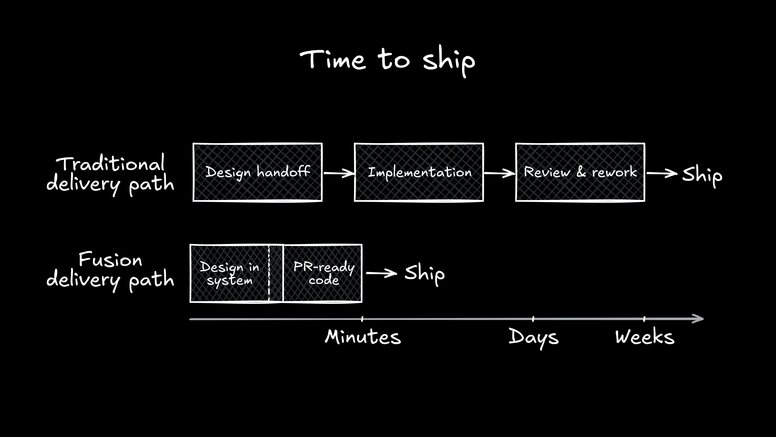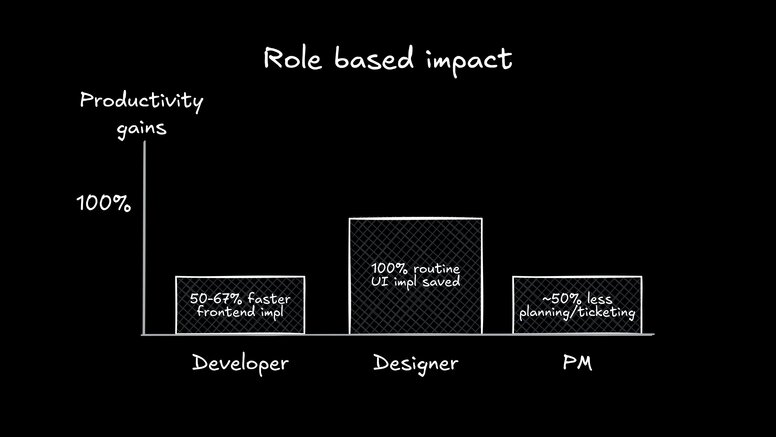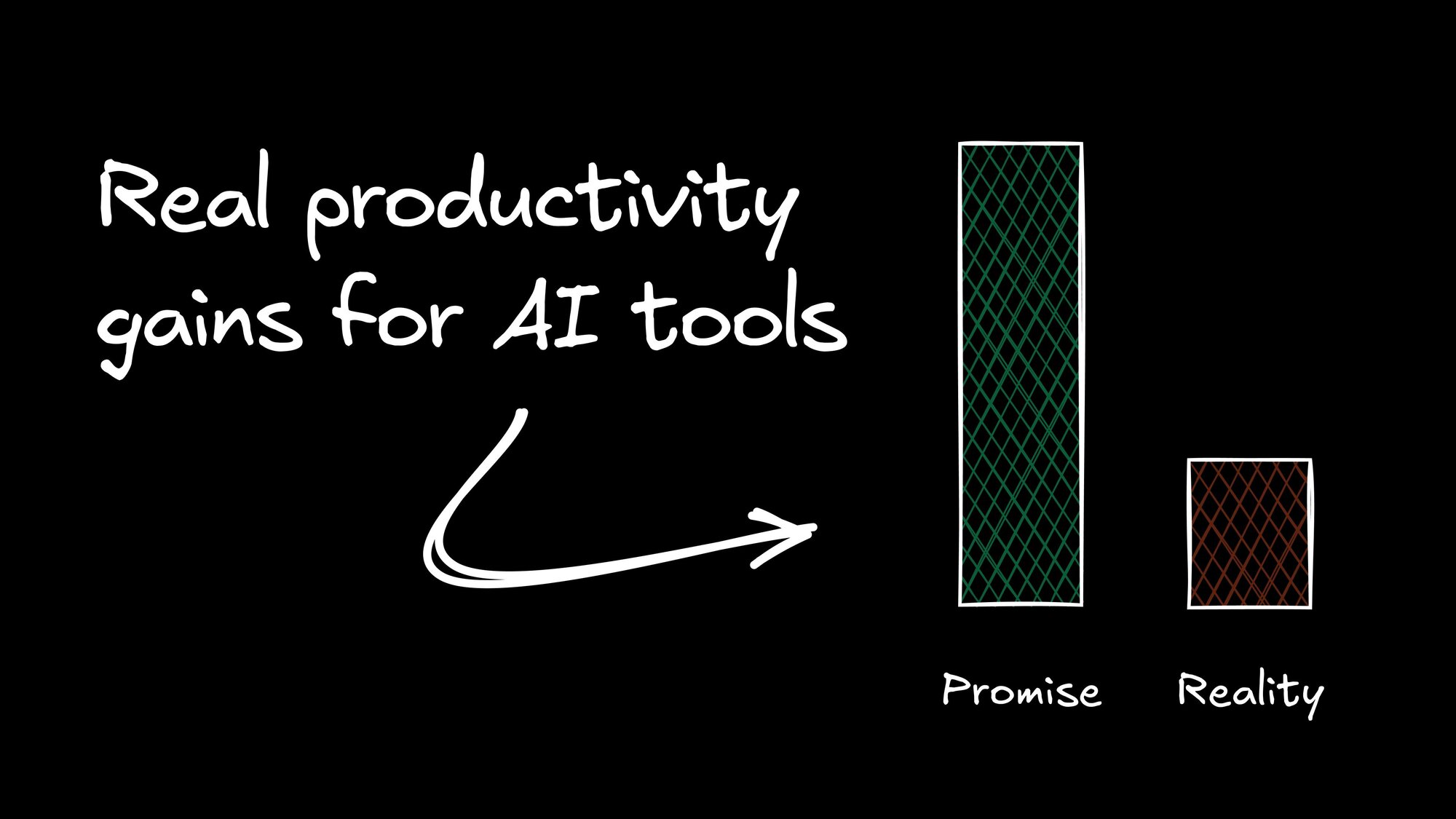Most AI visual development tools look good in a demo but break down in the enterprise. Instead of faster delivery, teams get unreviewable code, integration headaches, and security risks that slow everything down. What's promised as productivity ends up as more work.
Fusion takes a different path. It generates production-grade code inside your stack, using your standards, your Git, and your guardrails. The result: measurable improvements in delivery speed, collaboration, and code quality, achieved by real teams in real workflows.
Most AI visual development platforms look promising in demos: fewer cycles wasted on UI, faster handoffs, and more time freed up for strategic work.
But for many organizations, delivering measurable gains in enterprise settings is more complicated.
- Measurement challenges: Even when workflows feel like they're moving faster, teams can't track gains across the full lifecycle, from design specs to production. Without those benchmarks, leaders ask the hard questions: "Is this real improvement, or just marketing spin? How do we prove we're actually saving time?"
- Code quality gaps: When AI outputs fail code review, developers start to wonder: "Will this create more work than it saves?" Many platforms demo pixel-perfect screens, but the code often needs hours of debugging and rewriting. Instead of accelerating delivery, poor quality creates skepticism that stalls adoption.
- Integration friction: Enterprise teams have invested years building custom design systems and frameworks. Off-the-shelf tools rarely fit cleanly into those environments or leverage the thinking and work you already did, leaving teams asking: "Will we end up maintaining two separate workflows?" The integration friction often outweighs any promised efficiency gains.
- Governance risks: Without enterprise-grade controls, leaders are rightly wary of exposing IP, training models on proprietary code, or losing design consistency at scale. The natural question becomes: "Can we trust this platform to keep our proprietary code secure and maintain compliance?" For teams responsible for safeguarding both brand and regulatory requirements, that risk outweighs any efficiency gains.
This is why progress so often feels elusive with generic AI tools. These aren't just implementation challenges; they're structural flaws that prevent platforms from succeeding at enterprise scale.

Instead of working around enterprise limitations, Fusion works with them, turning common challenges into measurable business advantages. Each question leaders raise has a direct, proven answer in Fusion's workflow and results.
Most platforms can't show whether gains are real. When leadership asks, "How do you prove this is actually saving money and time?" teams are often left without an answer.
Fusion changes that by tying every output to your repo, components, and git-based workflows so productivity savings can be measured across the full lifecycle, not just during design handoff.
Teams using Fusion report faster delivery cycles and measurable productivity gains across product development, including reductions in delivery time of component updates, iterations, and features from weeks to minutes. These are metrics leadership can point to when assessing real business impact.

Developers are right to be skeptical of AI-generated code. When outputs fail review, the burden falls on them to rewrite and debug.
Fusion eliminates that risk by mapping to your design system and coding standards. The code is PR-ready from the start, so teams review and ship instead of rewriting and reworking. A major Canadian retailer demonstrated this advantage by turning a 30-page design spec into production-ready React components in just 30 minutes, a task that previously took weeks.

Enterprise teams have two critical concerns: security and integration. "Will this actually work with our existing setup? Can we trust this solution with our proprietary code and maintain compliance?"
Fusion delivers enterprise-grade trust with SOC 2 Type II compliance, and unlike platforms that store your code externally, it operates fully within your security perimeter, your code never leaves your control with our Privacy Mode.
It integrates natively within your repos and frameworks, with full support for React, Vue, Angular, and more. It connects seamlessly with Figma and Git, ensuring your existing workflows remain intact.
That depth of integration means Fusion scales where other tools stall. A $30B+ real estate leader empowered UX designers to prototype dashboards directly in code, accelerating delivery without adding engineering bottlenecks. Another enterprise launched 20+ new sites in under 8 months, a pace impossible with bolt-on AI tools.

Executives often worry about resource efficiency: "Are we just moving work around without real savings?" With most tools, that's exactly what happens. Tasks shift from one role to another, but the overall workload stays the same.
Fusion reduces friction and workloads across the organization by enabling governed contributions from PMs, designers, and developers. The result is measurable time savings across multiple workflows:
- For new features: Product managers cut planning and ticketing work by roughly 50%, freeing them to focus on roadmap priorities instead of specs. Developers accelerate frontend implementation by 50--67%, spending their cycles on higher-order problems instead of repetitive UI.
- For small UI iterations and quick UX fixes: Designers save 100% of implementation time on routine changes, enabling rapid iteration without waiting for sprint cycles.
These gains add up to faster releases, leaner teams, and lower total cost of ownership. And they're already happening in live enterprise environments, not just in product demos.

Together, these outcomes prove Fusion consistently delivers measurable gains across speed, quality, and cost efficiency in real-world enterprise environments.
Enterprise teams adopting Fusion today aren't just speeding up release cycles, they're setting the new benchmark for efficiency across the entire software development lifecycle, while competitors struggle with tools that over-promise and under-deliver.
These teams are seeing measurable gains in productivity, code quality, and total cost of ownership, results their leadership can track and trust.
Ready to see how much your team could save? Book a demo to get a customized ROI projection from our team.
Builder.io visually edits code, uses your design system, and sends pull requests.
Builder.io visually edits code, uses your design system, and sends pull requests.




 Connect a Repo
Connect a Repo








